August 13, 2010 – Rare Earths Are Becoming a Lot More Rare
Featured Trades: (RARE EARTHS),
(AVL.TO), (GWMGF.PK), (RAREF.PK), (LYSCF),
(SILVER), (SLV),
(OIL), (USO), (XOM), (OXY), (NATURAL GAS), (UNG)
United States Oil Fund ETF
United States Natural Gas Fund ETF
(AVL.TO), (GWMGF.PK), (RAREF.PK), (LYSCF),
(SILVER), (SLV),
(OIL), (USO), (XOM), (OXY), (NATURAL GAS), (UNG)
United States Oil Fund ETF
United States Natural Gas Fund ETF
1) Rare Earths Are Becoming a Lot More Rare. Interest in Rare Earths is starting to heat up in a dramatic fashion and it is something you should keep on your radar. So named because they were hard to get in the 18th and 19thcentury, these once obscure elements have suddenly become the focus of several converging trends in the global economy, as they are the key ingredient of magnets. There are 17 in all, divided into light (cerium, Ce, lanthanum, La, and neodymium, Nd) and heavy (dysprosium, Dy, terbium, Tb, and europium, Eu).
It turns out that you can’t build a hybrid or electric car, a wind turbine, thin film solar, LED’s, high performance batteries, or a cell phone without these elements. One Prius uses 25 kilograms of the stuff. You also can’t fight a modern war without rare earths, being essential for radar, missile guidance systems, navigation, and night vision goggles.
That’s where things get interesting. China now produces 97% of the world’s rare earth supplies, much of it coming from small mines operating by criminal gangs where it is safe to say, concerns about environmental considerations are nil. Recently, China announced that it may start restricting rare earth exports, possibly banning several, it is thought, in order to force foreigners to buy more of their downstream electronic products. Such a ban could begin as early as 2012.
The world market for rare earths is tiny now, amounting to only $1.4 billion a year. But Toyota intends on doubling its production of Prius’s from one million to 2 million units in the near future, while China and South Korea want to boost their combined electric and hybrid production by 1 million units by the end of next year. Demand for wind turbines is going off the charts, thanks to massive government subsidies in Europe and the US.
America was once the world’s largest producer of these elements, until it was undercut on prices by China (see chart below), and all US production ceased. The threatened Chinese export ban has prompted a group of investors to reopen Molycorp’s Mountain Pass California mine, a jackrabbit ridden, rattlesnake infested pit an hour southwest of Las Vegas. The mine was the world’s largest producer of cerium and neodymium, and provided the europium that was used to produce the first color televisions. The group has filed with the SEC for an IPO that seeks to raise $500 million to reopen the mine and a nearby refinery.
Now congress wants to get involved, proposing a rare earths strategic stockpile for the military, and offering subsidized loans to fund it. Remember what that did for oil? Every peak in oil prices in the last 30 years coincided with the government topping up its strategic petroleum reserve.
Rare earth prices have already started to move, with cerium doubling to $4/pound since 2007, and neodymium up 500% to $23/pound during the same period. Rare earths don’t have any futures or ETF’s to trade, so the only way to get involved is through the miners themselves, which involves an added element of risk. Take a look at the established players, which include the Canadian firm, Avalon Rare Metals (AVL.TO) (click here for their site), Great Western Minerals Group (GWMGF.PK), Rare Earth Metals (RAREF.PK), Lynas Corp (LYSCF), and Molycorp, after it goes public.
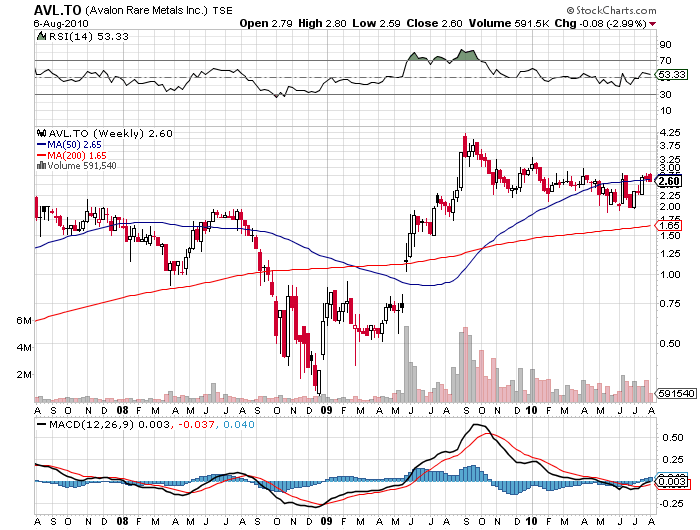
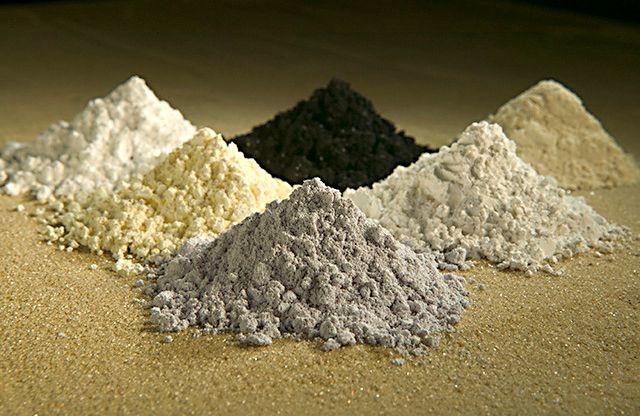
Additional Pieces And Charts For Premium Subscribers
2) Why the Really Big Play is in Silver.
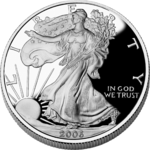
QUOTE OF THE DAY
“The biggest trend of 2010 is to see who gets kicked out of the banking system,” said Meredith Whitney, who runs a boutique financial research firm
“The biggest trend of 2010 is to see who gets kicked out of the banking system,” said Meredith Whitney, who runs a boutique financial research firm
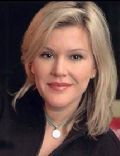
This is not a solicitation to buy or sell securities.
For full disclosures click here at http://www.madhedgefundtrader.com/disclosures.
For full disclosures click here at http://www.madhedgefundtrader.com/disclosures.
The "Diary of a Mad Hedge Fund Trader"(TM) and the "Mad Hedge Fund Trader" (TM) are protected by the United States Patent and Trademark Office
The "Diary of the Mad Hedge Fund Trader" (C) is protected by the United States Copyright Office.
Futures trading involves a high degree of risk and may not be suitable for everyone.
The "Diary of the Mad Hedge Fund Trader" (C) is protected by the United States Copyright Office.
Futures trading involves a high degree of risk and may not be suitable for everyone.
Tags:(AVL.TO), (GWMGF.PK), (LYSCF), (NATURAL GAS), (OIL), (OXY), (RARE EARTHS), (RAREF.PK), (SLV),(UNG), (USO), (XOM), silver
August 12, 2010 – Lunch With the CIA
Featured Trades: (LUNCH WITH THE CIA),
(PLATINUM), (PPLT),
(NEW NUCLEAR), (NUSCALE POWER),
(THE CHIHUAHUA GLUT)
ETFS Physical Platinum ETF
(PLATINUM), (PPLT),
(NEW NUCLEAR), (NUSCALE POWER),
(THE CHIHUAHUA GLUT)
ETFS Physical Platinum ETF
1) Lunch With the CIA. Lunch with the Central Intelligence Agency is always interesting, although five gorillas built like brick shithouses with wires sprouting out of their ears, staring at me intently, didn’t help my digestion.
Obama’s pick of Leon Panetta as the agency’s new director was controversial because he didn’t come from an intelligence background- upsetting the career spooks at Langley to no end. But the President thought a resume that included 16 years as the Democratic congressman from Monterey, California, and stints as Clinton’s Chief of Staff and OMB Director, was good enough. So when Panetta passed through town on his way home to heavenly Carmel Valley for the holidays, I thought I’d pull a few strings in Washington to catch a private briefing.
The long term outlook for supplies of food, natural resources, and energy is becoming so severe that the CIA is now viewing it as a national security threat. Some one third of emerging market urban populations are poor, or about 1.5 billion souls, and when they get hungry, angry, and politically or religiously inspired, Americans have to worry. This will be music to the ears of the hedge funds that have been stampeding into food, commodities, and energy for the past three weeks. It is also welcome news to George Soros, who has quietly bought up enough agricultural land in Argentina to create his own medium sized country.
Panetta then went on to say that the current monstrous levels of borrowing by the Federal government abroad is also a security issue, especially if foreigners decide to turn the spigot off and put us on a crash diet. I was flabbergasted, not because this is true, but that it is finally understood at the top levels of the administration and is of interest to the intelligence agencies. Toss another hunk of red meat to my legions of carnivorous traders in the (TBT), the leveraged ETF that profits from falling Treasury bond prices!
Job one is to defeat Al Qaida, and the agency has had success in taking out several terrorist leaders in the tribal areas of Pakistan with satellite directed predator drones. The CIA could well win the war in Afghanistan covertly, as they did in the last war there in the eighties, with their stinger missiles supplied to the Taliban for use against the Russians. The next goal is to prevent Al Qaida from retreating to other failed states like Yemen and Somalia. The Agency is also basking in the glow of its discovery of a second uranium processing plant in Iran, sparking international outrage, and finally bringing Europeans to our side with sanctions against Iran.
Cyber warfare is a huge new battlefront. Some 100 countries now have this capability, and they have stolen over $50 billion worth of intellectual property from the US in the past year. As much as I tried to pin Panetta down on who the culprits were, he wouldn’t name names, but indirectly hinted that the main hacker-in-chief was China. This comes on the heels of General Wesley Clark’s admission that the Chinese cleaned out the web connected mainframes at both the Pentagon and the State Department in 2007. The Bush administration kept the greatest security breach in US history secret to duck a hit in the opinion polls.
I thought Panetta was incredibly frank, telling me as much as he could without those gorillas having to kill me afterwards. I have long been envious of the massive budget that the CIA deploys to research the same global markets that I have for most of my life, believed to amount to $70 billion, but even those figures are top secret. If I could only manage their pension fund with their information with a 2%/20% deal! I might even skip the management fee and go for just the bonus. The possibilities boggle the mind!
Panetta’s final piece of advice: don’t even think about making a cell phone call in Pakistan. I immediately deleted the high risk numbers from my cell phone address book.
I have been pounding the table with these guys for four decades to focus more on the resource issue, but they only seemed interested in missiles, planes, tanks, subs, and satellites. What a long strange trip it’s been. Better take another look on any dip at the Market Vectors agricultural ETF (DBA), their agribusiness ETF (MOO), as well as my favorite ag stocks, Monsanto (MON), Mosaic (MOS), Potash (POT), and Agrium (AGU). Accidents are about to happen in their favor.
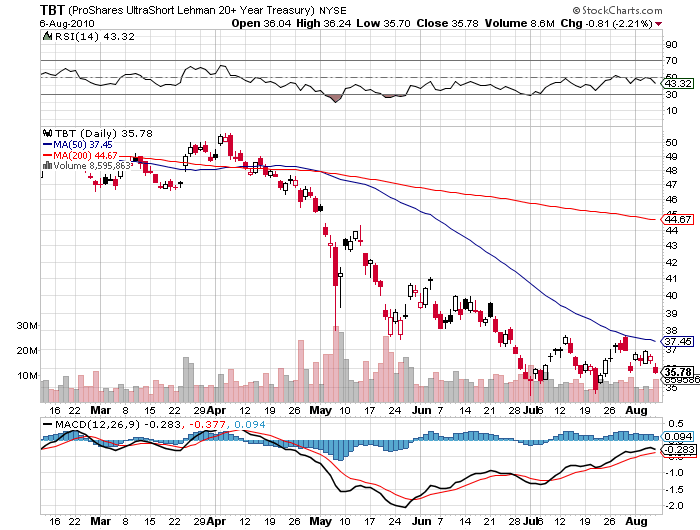
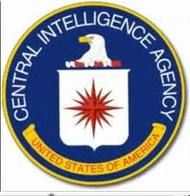
Additional Pieces And Charts For Premium Subscribers
If you haven't already listened to this Ben Davies sheds some light on the gold and silver ETF's
Ben Davies is CEO of Hinde Capital - Ben ran trading for RBS Greenwich Capital in London where he managed a macro portfolio. Ben Davies and Mark Mahaffey, former colleagues from RBS Greenwich Capital, established Hinde Capital in early 2007, primarily to focus on the precious metals and commodity sector. Ben Davies gives a tremendous interview which is a must listen for anyone looking to increase their understanding of the gold market.
http://www.kingworldnews.com/kingworldnews/Broadcast/Entries/2010/8/12_Ben_Davies.html
If you haven't already listened to this Ben Davies sheds some light on the gold and silver ETF's
Ben Davies is CEO of Hinde Capital - Ben ran trading for RBS Greenwich Capital in London where he managed a macro portfolio. Ben Davies and Mark Mahaffey, former colleagues from RBS Greenwich Capital, established Hinde Capital in early 2007, primarily to focus on the precious metals and commodity sector. Ben Davies gives a tremendous interview which is a must listen for anyone looking to increase their understanding of the gold market.
http://www.kingworldnews.com/kingworldnews/Broadcast/Entries/2010/8/12_Ben_Davies.html